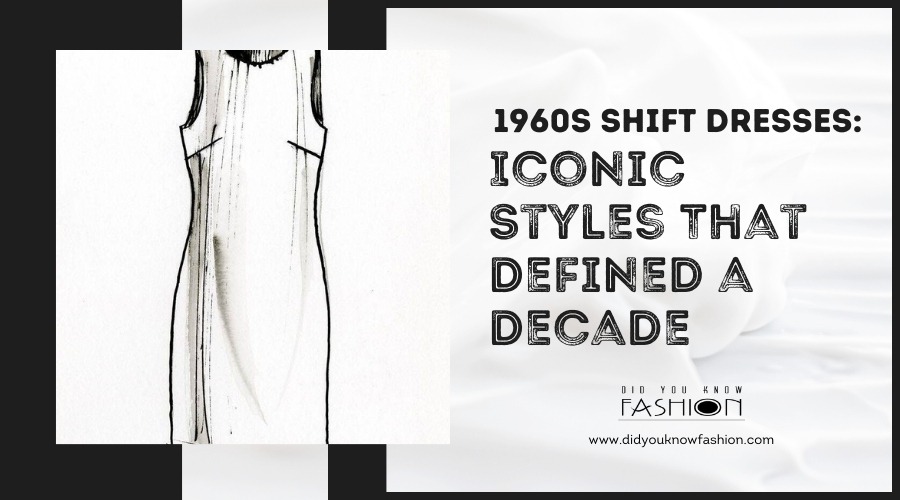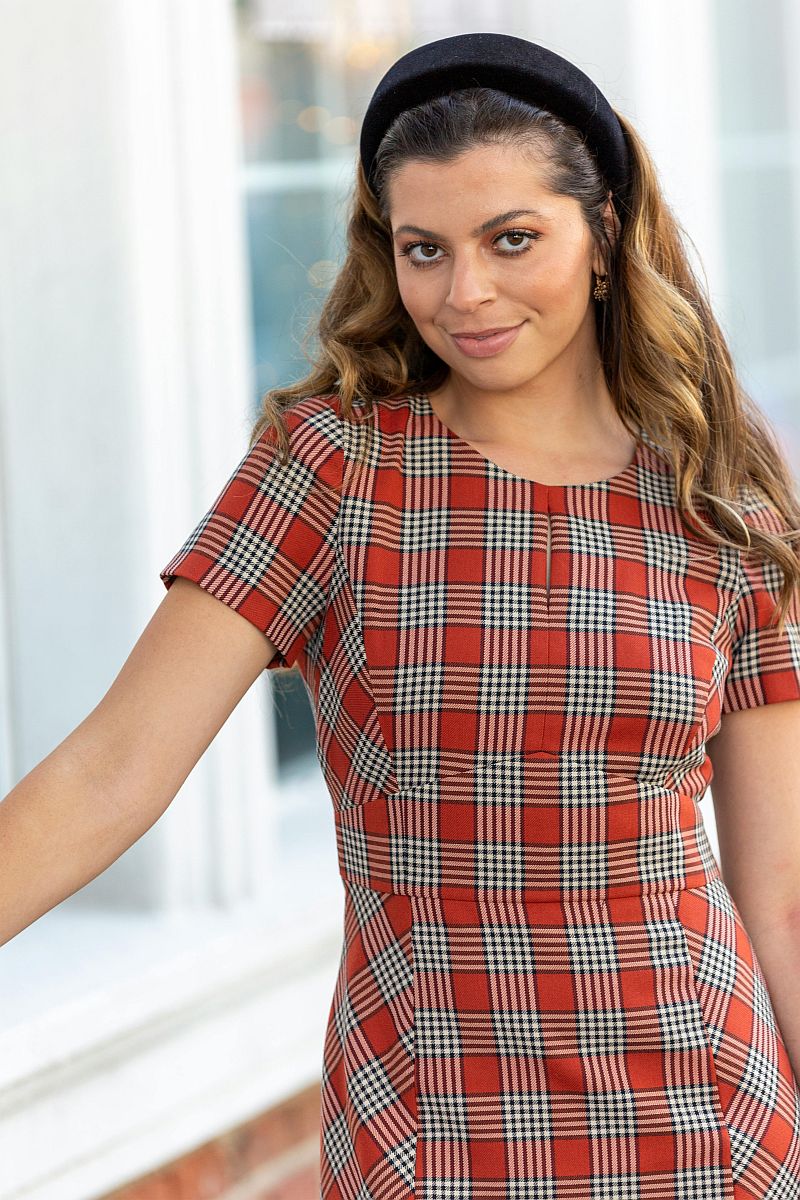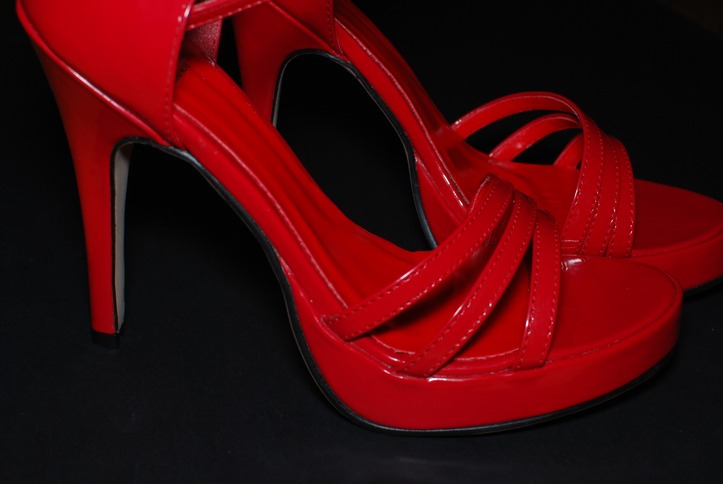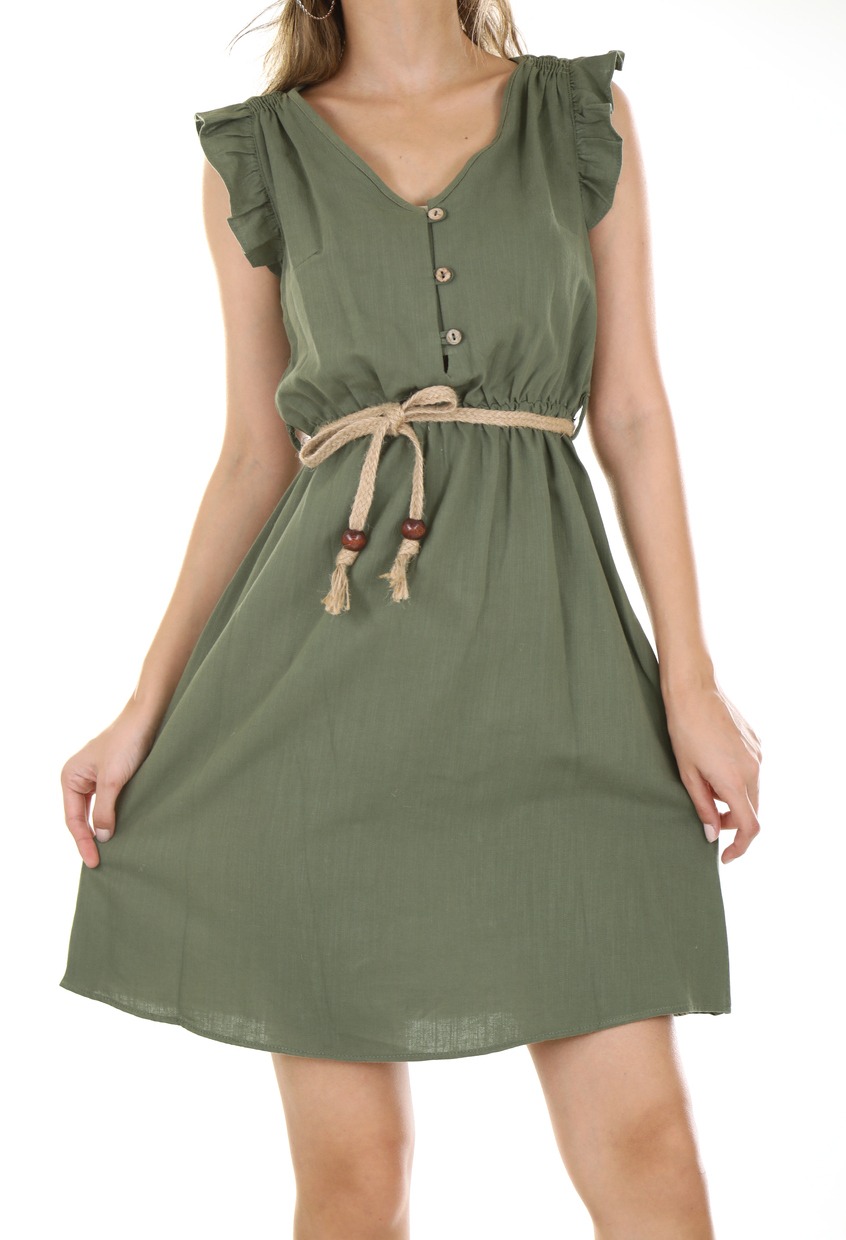The 1960s marked a revolutionary period in the fashion world, with the introduction and preferment of the shift dress embodying the era’s radical departure from previous styles. Characterized by its simple, straight lines and lack of a defined waist, the shift dress emerged as a symbol of the youthful, modern aesthetic that defined the decade. It was a garment that celebrated freedom of movement and offered a stark contrast to the cinched and tailored silhouettes of the 1950s. The versatility of the shift dress made it an instant hit; it could be dressed up or down and was accessible to women of various ages and body types.
Influential figures like Jackie Kennedy Onassis popularized the shift dress, which further cemented its status as a key piece of 1960s fashion. The dress was known for its sleeveless design and typically finished above the knee, echoing the period’s daring approach to hemlines. The shift dress frequently featured eye-catching prints and bold colors that matched the vibrant spirit of the decade. Not only was the dress visually striking, but it also signaled changing societal norms, as women embraced more liberating styles alongside the decade’s progressive attitudes.
Renowned for its simplicity and yet its potential for statement-making, the shift dress of the 1960s remains a fashion icon. Designers and everyday wearers alike adored the dress for its combination of comfort, simplicity, and style. Its enduring design has continued to influence fashion trends to the present day, proving that the shift dress is more than just a piece of clothing – it’s a timeless embodiment of an era that pushed the boundaries of conventional fashion.
The Rise of 1960s Shift Dresses
The fashion landscape of the 1960s revolutionized women’s clothing, with shift dresses emerging as a symbol of modernity and freedom. These streamlined garments epitomized the Mod fashion scene, distancing themselves from the more restrictive styles of previous eras.
Characteristics of Shift Dresses:
- Shape: Straight cut, no waist definition
- Length: Short, often above the knee
- Comfort: More comfortable than earlier dresses, allowing freedom of movement
In the late 1950s, designers experimented with looser styles, which set the stage for the shift dress’s popularity. By the early 1960s, the modern shift dress, with its simple lines and lack of adornment, began to take hold. It was often seen with darting at the bust for a slight shape, but it maintained a relatively boxy silhouette.
The shift dress’s appeal was partly due to its versatility. It was a blank canvas for bold geometric prints and vibrant colors, hallmarks of 1960s dresses. They could be easily dressed up or down, making them suitable for a range of social settings.
| Decade | Style Influences | Fashion Shift |
|---|---|---|
| Late 1950s | Sack dress experimentation | Prelude to less structured forms |
| 1960s | Mod and youth culture | Emergence of minimalistic shift dress |
The cultural impact of 1960s shift dresses also reflected broader social changes, such as women’s liberation. Their ease and youthful appearance resonated with the era’s push towards more casual, accessible fashion. As a result, shift dresses became a mainstream staple, symbolizing the progressive spirit of the decade.
Iconic Designs and Designers
The 1960s shift dress became an emblem of the era’s fashion revolution, with specific designers leaving an indelible mark on its iconic silhouette.
Mod Influence
Mod dresses, characterized by their straight cut and simplicity, played a central role in defining 1960s style. The Mod aesthetic gravitated towards bold color blocks and geometric patterns, embodying the youth culture’s zest for innovation and a break from tradition. Piet Mondrian’s art significantly influenced this design ethos, leading to the creation of dresses that mirrored his abstract, grid-like compositions. These designs featured stark lines and squares, fused with a color palette that was daring for the time.
Notable Fashion Figures
A key designer who brought the mod shift dress to prominence was Yves Saint Laurent. His designs integrated Mondrian’s artistic concepts, resulting in the iconic Mondrian dress, which has since become an exemplar of the intersection between art and fashion. This garment showcased a simple, sleeveless shift silhouette divided by black lines and filled with blocks of primary colors.
Twiggy, a British model, also became synonymous with the shift dress, embodying its modern and youthful look. Her waif-like figure and bold eye makeup accentuated the simplicity and style of the shift dress, making her an icon of that time and propelling the popularity of this fashion staple.
As these designers and figures of fashion introduced innovative patterns and uncomplicated lines, they cemented the idea that a dress could be both simple and profoundly influential. The shift dress thus became a canvas for self-expression during a decade of significant societal shifts.
Shift Dress Styles and Variations
Shift dresses in the 1960s epitomized the era’s progressive fashion sensibilities, marked by their straightforward design and freedom of movement. This style offered women a departure from the form-fitting silhouettes of preceding decades.
Patterns and Colors
The shift dress frequently featured bold patterns and vivid colors. Psychedelic prints, reflecting the counterculture of the time, showcased swirling motifs and kaleidoscopic designs. These vibrant patterns became synonymous with the era’s progressive spirit. In contrast, plaid designs provided a more subdued, yet equally popular, option for those favoring a less audacious look.
- Psychedelic: Swirling motifs and vivid, contrasting colors.
- Plaid: Better suited for a more conservative aesthetic but still on-trend for the era.
Material and Texture
Materials played a considerable role in the versatility of the shift dress. Knit fabrics provided a comfortable, form-fitting look that maintained the boxy shape of the dress. Velvet was a popular choice for a luxurious feel, often worn in more formal settings. Casual variants of the shift dress appeared in linen, offering breathability and a more relaxed appearance suitable for everyday wear.
- Knit: Form-fitting yet comfortable and casual.
- Velvet: Chosen for a touch of elegance and formality.
- Linen: Breathable material for everyday comfort.
By selecting different materials, the shift dress could easily transition from daywear to evening attire, emphasizing its adaptability and timeless appeal.
Accessorizing Shift Dresses
The versatility of the shift dress makes it an ideal canvas for a myriad of accessories, with options ranging from classic to bold. Strategic choices in footwear and complementary accessories can elevate the simplicity of the shift dress into a statement ensemble.
Footwear
- Kitten Heels: A pair of kitten heels complements the short hemline of shift dresses, embodying the essence of the ’60s while providing modern comfort and subtle elevation.
- Tights: For cooler weather or for a more modest look, tights in various textures and colors can be paired with shift dresses. They offer additional warmth while adding a dimension of style.
Complementary Accessories
- Jewelry: Selecting the appropriate jewelry brings a personal touch to a shift dress.
- Necklaces: A simple chain or a statement piece can serve as a focal point.
- Earrings: Studs maintain a minimalist approach, while dangle earrings create a sense of movement.
- Accessories:
- Scarves: When worn around the neck or as a headband, scarves introduce a pop of color or pattern.
- Belts: A slender belt can be used to accentuate or to hint at a waistline, adding shape to the straight silhouette of a shift dress.
Cultural and Fashion Impact
The shift dress of the 1960s holds a pivotal place in the fashion history as a symbol of cultural transformation. During this era, women’s fashion experienced a significant evolution that mirrored the wave of social change sweeping across societies.
Mod Style and the Shift Dress
The mod subculture adopted the shift dress as part of their signature style: simple, streamlined, and modern. This silhouette allowed women to move freely and comfortably unlike the restricted fashions of the previous decades.
- Importance:
- Simplicity: Offered a canvas for bold prints and colors.
- Egalitarian Fashion: Accessible to women of all body types.
The Classic Influence
The 1960s shift dresses also echoed the era’s penchant for classic elegance. Public figures like Jackie Kennedy were instrumental in popularizing the shift dress, associating it with poise and sophistication.
- Key Features:
- Tailored Fit: Contrasting the looser mod style.
- First Lady’s Choice: Solidified as part of the American classic wardrobe.
Hippie Movement and Shift Dresses
In the late ’60s, the hippie movement with its ethos of freedom and counterculture, further expanded the meanings attached to the shift dress. Comfort, ease, and the rejection of conventional fashion norms became associated with the shift dress.
- Elements:
- Bohemian Prints: Encompassing the free-spirited nature of hippie fashion.
- Relaxed Aesthetic: Reflecting a departure from traditional formality.
In conclusion, the shift dress was more than just a piece of clothing; it was a representation of the cultural shifts occurring in the 1960s. As women sought independence and asserted their presence in public spheres, the shift dress became a symbol of the social progress and the changing attitudes of the time.





